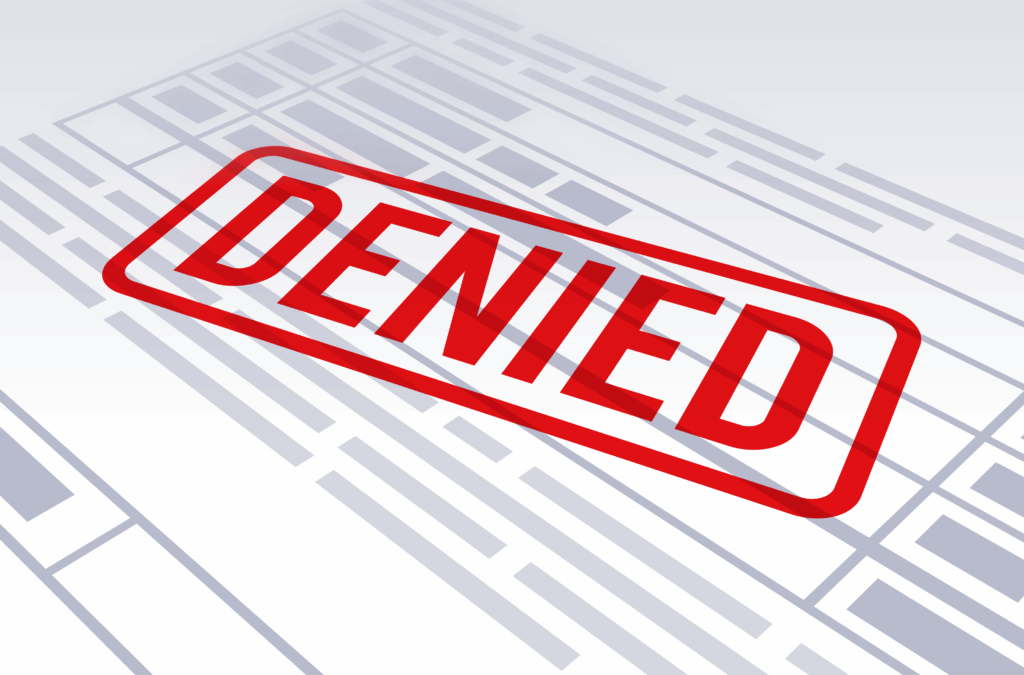
My Aching Head

Jill Dehlin has a friend who goes out to her vehicle during her lunch break to rest from headaches induced by working on a computer screen all day.
Dehlin, a registered nurse and the board secretary for the National Headache Foundation, says headache and migraine are “very common” conditions. They affect roughly 15% of Americans, 40% of whom have not been diagnosed, according to Dehlin. Nearly four in five people experience tension-type headaches at some point in their lives, she says.
The annual cost of headaches and migraines to U.S. employers has been estimated at $20 billion.
The CDC reports women to be nearly twice as likely as men to develop severe headaches or migraines.
Non-pharmacological treatments include cell phone apps, paper-and-pen headache diaries, and quiet rooms in the workplace.
“Headache and migraine are invisible conditions,” Dehlin explains, “meaning there are no imaging or blood tests that will help with diagnosis, which is made by symptoms alone.”
Indeed, a 2018 joint study conducted by Swiss-based global pharmaceutical company Novartis International and the European Migraine and Headache Alliance found “significant disruption to daily life and work” caused by migraine, with annual direct and indirect costs, including lost productivity, estimated at $20 billion in the United States and almost $27 billion in Europe. The global study of 11,000 people in 31 countries estimated that 60% of employees with severe migraine miss an average of one week of work per month.
“Migraine is unrecognized in the workforce, in part, because there are no physical signs of the disease,” says Teshamae Monteith, M.D. and associate professor of clinical neurology at the University of Miami Health System in Florida. “It is also highly stigmatized. So employees may not let their co-workers and employers know they have the condition.”
Monteith, who is also chief of the health system’s headache division, adds, “The episodic nature of migraine allows for some work productivity. However, presenteeism”—lost productivity due to illness or other conditions—“is common due to clinical symptoms of the disorder.”
More Women at Risk
The Centers for Disease Control and Prevention (CDC) reports women to be nearly twice as likely as men to develop severe headaches or migraines, though the condition declines with age. Among men between the ages of 18 and 44, 12.3% experienced headaches and migraines in the report data. For men older than 75, that figure dropped to 4%. The percentage of women in those age groups experiencing headaches and migraines also dropped—from 25.5% to 7.6%, respectively, according to the CDC.
“Migraine peaks during a person’s 30s and 40s,” asserts Monteith, who describes headaches as “three times more common in women. Industries associated with those demographics may be most impacted. Industries that carry certain exposures, such as shift work and strong sensory stimulations, may also be impacted. Light, sound and perfumes can trigger migraine, as can weather changes.”
Richard Gundling, a senior vice president at the Healthcare Financial Management Association, says employers should be mindful of the demographics of their workforce. “Industries with more women may address migraines more directly,” Gundling says. “A migraine not only impacts the employee’s workplace but also her home life. Education can help employees think about how to lessen the burden at home.”
The Economics of Headaches
According to “The Burden of Neurological Disease in the United States,” a report from the 2017 Annals of Neurology, chronic migraine cost $9,364 annually per employee. Indirect costs, including lost productivity, accounted for 70% of that figure. Episodic migraine, according to the study, cost $2,158 annually per person. The study cites statistics from the American Migraine Prevalence and Prevention study, the largest of its kind.
Common migraine pharmaceutical preventions include antiepileptics (anti-seizure medication), antidepressants, beta blockers, triptans (abortive medications), non-steroidal anti-inflammatories, and opioids, according to the August 2022 Journal of Headache Pain. That publication also reports that increased use of novel preventive medications nearly tripled their cost from 2018 to 2020. Thirty-day adjusted prescription refills for vasodilator medications, which open blood vessels, went up 0.5% and increased costs for commercial and Medicare beneficiaries but not Medicaid and health insurance exchange members.
“Medication indirectly affects employer costs and planning because the insurance companies they contract with often force individuals with migraine to undergo step therapy,” Monteith says, referring to a form of managed care “that may delay access to first-line medications with better efficacy and safety. This may result in more missed workdays if adequate preventive treatment is not recommended and maintained.”
Indeed, the American Migraine Prevalence and Prevention study found nine of 10 people “can’t function normally” during days when they experience migraine and nearly three in 10 require bed rest. Nearly half the people who experience migraine are not able to do household chores, and 30% are prevented from participating in family or social activities. More than one in four people, the study found, miss at least one day of work in a three-month period.
“When discussing how migraine affects the workplace, we refer to absenteeism and presenteeism,” says Jennifer Robblee, a neurologist with the Barrow Neurological Institute in Phoenix. “When patients have a higher frequency of migraine attacks, especially if poorly controlled, there is a higher likelihood of absenteeism and presenteeism.”
More than half of migraine sufferers take over-the-counter medications or nothing at all, according to the American Migraine Prevalence and Prevention study. Likewise, the Novartis study states that 90% of survey respondents tried one or more preventive treatments and 80% changed treatment one or more times.
According to the Cleveland Clinic, 75% of adults worldwide experience headaches each year. A major cause of absenteeism from work and school, headaches take a toll on social and family life, leading some to develop anxiety and depression. The Cleveland Clinic lists common primary headaches, defined as those not associated with a medical condition.
Tension-type headache: The most common primary headache, its symptoms include throbbing, mild to moderate pain on both sides of the head. Treatments include over-the-counter medications.
Migraine: The second-most-common primary headache, its symptoms include moderate to severe pain, nausea or vomiting, throbbing and abdominal pain that lasts four hours to three days. Other symptoms include sensitivity to noise, odors and light.
Cluster headaches: As the name implies, these occur in groups or clusters from one to eight times a day and in the spring or fall. The most severe primary headache, clusters last two weeks to three months and may disappear for months or years. Pain includes burning or stabbing sensation behind the eyes.
New daily persistent headaches: Sudden headaches that last more than three months. Pain can be constant and persistent, located on both sides of the head, and unresponsive to medication.
Sinus headaches: These headaches are usually the result of congestion or inflammation in the sinuses behind the cheeks and forehead. Often mistaken for migraine, symptoms include a bad taste in the mouth; deep, constant pain in the cheekbones and forehead that gets worse with movement; facial swelling; fullness in the ears; fever; and mucus discharge.
“People change preventive medications because the ones offered are not effective or have intolerable side effects,” Dehlin says. “This is particularly true in Europe and the U.K., where some of the newer medicines and neuromodulation devices have not yet been approved.”
Dehlin notes that no two migraines are alike. “I like to say, if you’ve seen one migraine, you’ve seen one migraine,” she says. “Each person will have different symptoms and respond differently to treatment. Not all treatments work for all people. This is problematic not only for the employer but the individual, trying different treatments to no avail.”
To better assess the prevalence of migraine and identify an effective treatment, Gundling recommends employers track prescription drug costs and prices to get a handle on how many employees suffer from migraine and use treatment. “Looking at frequency and the type of prescription drug may help target a plan to alleviate headaches,” he says.
Low-Cost Ways to Handle Headache
Headache and migraine care doesn’t need to cost an arm and a leg. Non-pharmacological treatments range from cell phone apps to paper-and-pen headache diaries.
“There are apps that help assist with preventive strategies,” Gundling says. “Many employees may find relief through exercise, yoga, and diet or alternative treatments, such as massage and acupuncture.”
Monteith concurs. “There are certainly low-cost ways, such as supporting work flexibility and healthy lifestyles, free online tracking programs, health education, access to nutraceuticals, and stress reduction programs,” says Monteith, who endorses workplace quiet rooms, spaces that offer dim lighting to take a nap and let acute migraine medications take effect.
Robblee thinks quiet rooms provide a cost-effective way to prevent employees from having to take time away from work. “I am a big supporter of this idea,” she says. “Sometimes a person needs one to two hours for their rescue medication to work, during which time laying down to rest is helpful. Once the medications work, they can go back to being functional at work rather than taking the day off to go home. This approach could actually result in less absenteeism.
“Early treatment of migraine attack works best. If the person waits until home to treat, they may have a less effective treatment response. If employees are allowed to work from home, they have more control of their environment, which allows them to be more effective.”
Dehlin says, “Having a quiet, dark place for an employee having an attack to take meds, which are often injectable, would be very helpful. So is a flexible work schedule or allowing the person to work remotely to avoid workplace triggers.”
Dehlin lists easy environmental fixes to prevent headache and migraine. “Help employees avoid triggers that could precipitate an attack,” she says, “such as prohibiting fragrance at the workplace, allowing employees to wear ear protection, and reducing exposure to fluorescent or LED lighting by allowing the employee to have a task lamp at their desk or to wear special FL-41 (blue-light sensitivity) glasses to block harsh lighting.”
Participants in the Novartis migraine study received a mobile app to track their condition and “share fact-based reports about their symptoms and history with physicians.” The app, which also tracked absenteeism and presenteeism, found Swiss employees with migraine missed almost 32 days of work per year.
“There are many apps to monitor migraine, but old-fashioned pen and paper works great to chronicle migraine symptoms,” Robblee says. “I recommend doing a stoplight calendar with red days for severe, yellow days for moderate and green days for mild non-disabling headache. Using a headache calendar is mainly a tool to see the pattern and frequency of migraine and how well treatments are working.”
Dehlin recommends the free, downloadable diary from the National Headache Foundation to help people track their headache and migraine days. Dehlin, who experiences migraines herself, says she thinks people underestimate their days with headache or migraine.
“Patients must communicate the frequency, duration and intensity of their headache and migraine days with their healthcare providers to get appropriate treatment,” she says.
It’s also important, she says, to determine possible triggers and effective treatments, as well as conditions that make a migraine worse. “Knowing how often you take a medication to stop an attack will let you know if it’s effective,” she says.
Robblee says employers should take these conditions seriously. “Beyond just understanding what a migraine attack can entail,” she says, “it is important to believe your employee that this condition severely impacts their function, including their ability to do their job safely and effectively. When patients are not supported by their workplace, I see a significant added stress, which greatly impacts their quality of life.”
Workers, Gundling says, like to know their employers are concerned about their health conditions. “Just having a conversation about migraines and headaches, stress and anxiety may be a great way to address the total cost of lost productivity and higher prescription drugs,” he says.
What Benefits Managers Can Do
According to Monteith, investing in headache and migraine care pays dividends to employers in terms of increased productivity and revenue. “Absenteeism can be reduced through employee health programs,” she says. “Employee productivity can be improved with referral programs, as access to consultations is a major barrier. Also, access to evidence-based preventive, acute treatment and education on lifestyle interventions is imperative.”
A report published in 2004 in the Journal of Occupational Environmental Medicine found U.S. employers might not understand how much productivity costs of migraine can be reduced with treatment. The comparative analysis of a financial service corporation with nearly 88,000 employees and a U.S. company with 10,000 employees reported projected annual losses, respectively, of 538 person-years, valued at almost $24 million, and 46 person-years, valued at almost $20 million.
- Understand and address the stigma of migraine and headache in the workplace.
- Download WorkMigraine, a four-core modular e-course from the National Headache Foundation, to learn about symptoms, treatment and prevention.
- Advocate for better working conditions and educate employees on ways to decrease workplace headache using stress reduction techniques and other lifestyle changes.
- Know that the Americans with Disabilities Act covers migraine and allows for reasonable accommodation or modification to the job.
- Examine their benefits package to ensure they include migraine and mental health treatment.
Monteith says benefits managers should ensure access to private insurance that offers specialists for employees with disabling headache disorders. “It is critical to avoid insurance companies that restrict access to newer, first-line acute and preventive therapies. Getting a consultation is the first barrier to diagnosis and treatment for EM and CM,” she says, referring to episodic migraine and chronic migraine. “Barriers may lead to diagnostic delay. Since migraine is so common, it often results in self-medication.”
Mental Health Comorbidities
Headache-related comorbidities include mental health problems, which also need managing. “The best way for a benefits manager to help depression and anxiety is to offer appropriate coverage for medicines and mental health,” Dehlin says. “Further, if a person with migraine gets appropriate treatment for their disease, the depression and anxiety associated with it decrease.
“The National Institute for Mental Health estimates 6.7% of all adults suffer from depression, and almost everyone has occasional anxiety. While both are comorbid, not everyone with migraine has anxiety or depression. A combination of psychotherapy and meds are often prescribed. When people feel their conditions are validated at work, this helps reduce anxiety about migraine on the job.”
Gundling describes prescription drug costs and mental wellness as “interrelated.” “Addressing mental well-being can have some impact on lowering drug costs,” he says. “Since there’s no cure for migraines, anything that addresses mental health in a broad approach should be considered. There are so many conditions impacted by mental health that any approach should address behavioral wellness.
“Look at whole-person care as it fits into the benefits program. It can be about wellness, prevention, and prescription drug and stress management.”
Dehlin says the benefits of proactive headache and migraine treatment outweigh the costs. “When benefits managers recognize how common migraine is in their workforce and the toll it takes on their bottom line,” she says, “they may find providing accommodations to be in their best interest. Educating the workforce is an important first step.”




